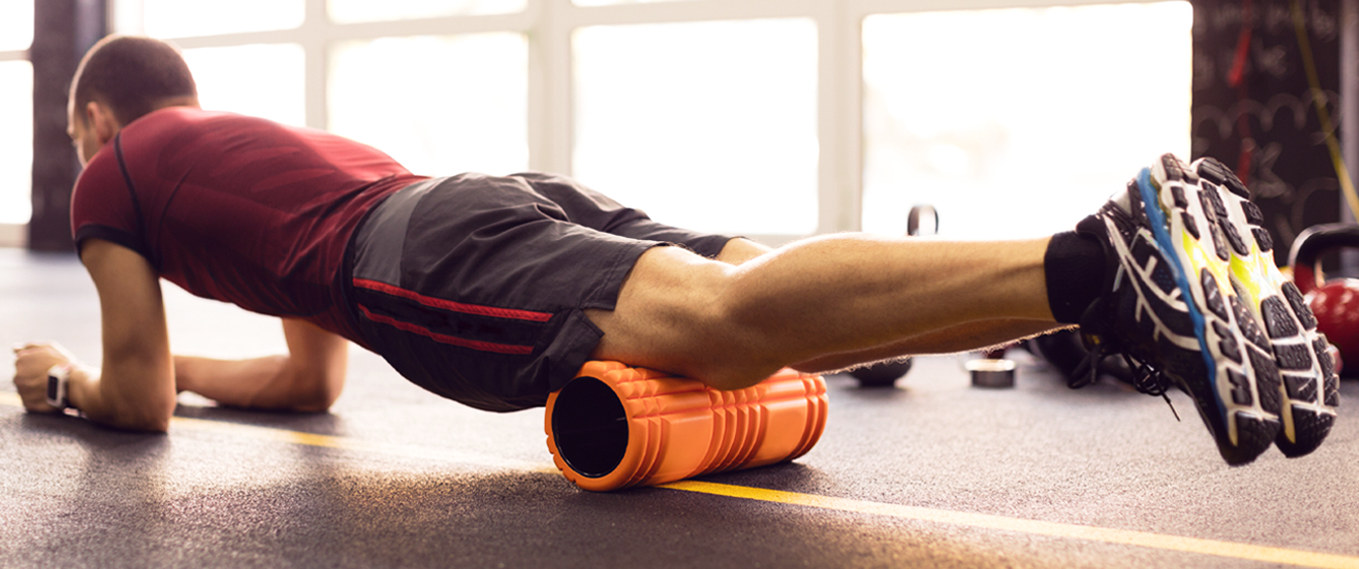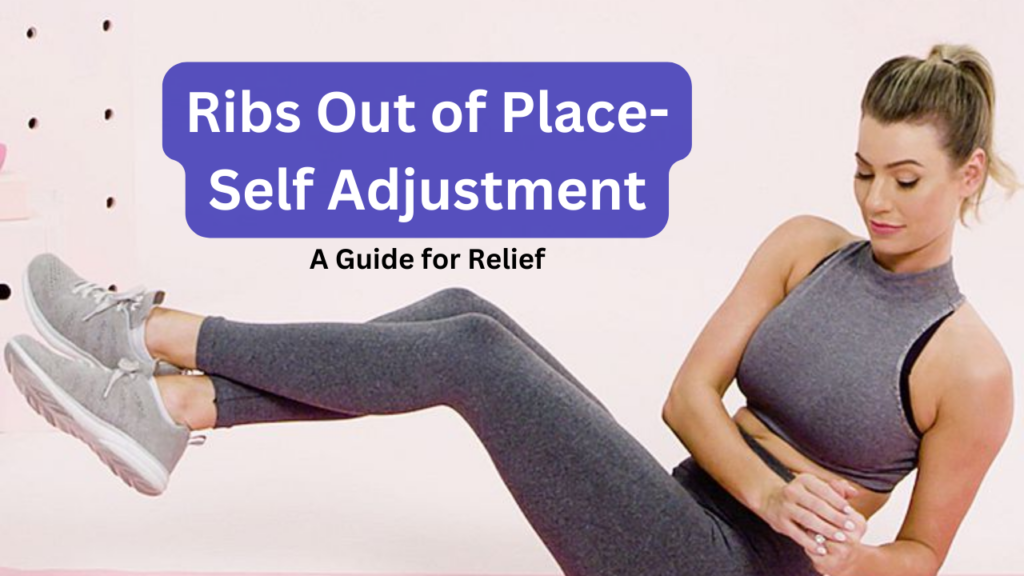We’ve all been there: that sudden, sharp pang in your chest that leaves you gasping for air and wondering if your ribs have gone rogue. While the term “Rib Out of Place Self Adjustment” is often used, it’s not entirely accurate from an anatomical standpoint.
Ribs are incredibly flexible and designed to move with every breath and twist of your torso. What you’re likely experiencing is a rib subluxation, a slight misalignment of the cartilage where the rib connects to the sternum or spine. Before you reach for the duct tape and attempt a DIY chiropractic session, rest assured that most rib subluxations resolve on their own within a few days.
However, the pain can be intense and debilitating, making it crucial to understand the symptoms, potential causes, and safe self-adjustment techniques to ease your discomfort and promote healing.
Common Causes of Rib Subluxation
The culprit behind that unwelcome rib twinge can be surprisingly diverse. Here are some of the most common triggers:
- Sudden movements: Coughing, sneezing, or twisting awkwardly can jolt your ribs out of their usual alignment.
- Physical activity: Overexertion during exercise, especially weightlifting or sports involving impact, can strain the muscles and ligaments around your ribs.
- Poor posture: Slouching or hunching for extended periods can put undue pressure on your rib cage, leading to misalignment.
- Trauma: A fall, collision, or direct blow to the chest can cause more severe rib injuries, including fractures or dislocations.
- Costochondritis: Inflammation of the cartilage connecting your ribs to the sternum can mimic the feeling of a rib out of place.

Symptoms of Rib Subluxation
While the telltale sharp pain is the most common symptom, rib subluxation can manifest in various ways:
- Sharp, localized pain: The pain is usually focused on one or a few ribs, often worsening with deep breaths, coughing, or certain movements.
- Tenderness: Pressing on the affected area will elicit a sharp twinge or dull ache.
- Popping or clicking sounds: Sometimes, you might hear or feel a subtle popping or clicking sensation as the rib moves back into place.
- Shallow breathing: Pain can restrict your ability to take deep breaths, leading to a feeling of tightness or shortness of breath.
- Muscle tension: The muscles surrounding the affected ribs may become tight and stiff, further contributing to discomfort.
Safe Self-Adjustment Techniques for Rib Subluxation
Remember, attempting forceful maneuvers to “pop” your ribs back in place is risky and potentially counterproductive. However, some gentle self-care strategies can promote healing and alleviate pain:
Gentle stretching and mobilization:
- Doorway chest stretch: Stand in a doorway with your forearms resting on either side of the frame. Lean forward gently, opening your chest and allowing your ribs to expand. Hold for 20-30 seconds and repeat several times.
- Cat-cow pose: Start on all fours with your hands shoulder-width apart and knees hip-width apart. As you inhale, arch your back and look up. As you exhale, round your back and tuck your chin to your chest. Repeat slowly and smoothly for 5-10 repetitions.
- Foam roller release: Lie on your back with a foam roller positioned under your upper back. Slowly roll back and forth, applying gentle pressure to your ribs and surrounding muscles.
Heat and cold therapy:
- Apply a warm compress or heating pad to the affected area for 15-20 minutes at a time. Heat can improve blood flow and promote muscle relaxation.
- Alternatively, use an ice pack wrapped in a towel for 10-15 minutes at a time. Cold therapy can help reduce inflammation and pain.
Deep breathing exercises:
- Focus on taking slow, diaphragmatic breaths, expanding your belly rather than your chest. Deep breathing can help improve oxygen flow, release tension, and ease discomfort.
Maintaining proper posture:
- Stand tall with your shoulders back and down. Avoid slouching or hunching, which can put additional strain on your ribs.
Recognizing Red Flags for Rib Subluxation

While most cases of rib subluxation heal within a few days with self-care, some situations necessitate seeking professional medical attention. Don’t hesitate to reach out to your doctor or a qualified healthcare provider if you experience any of these red flags:
- Severe pain that worsens instead of improving: If the pain is unrelenting and interferes with your daily activities, it could indicate a more serious injury.
- Difficulty breathing: If your pain restricts your ability to breathe deeply or comfortably, it requires immediate medical evaluation.
- Numbness or tingling: Numbness or tingling sensations around the affected area can be a sign of nerve damage and require prompt medical attention.
- Visible deformity: If your chest appears visibly distorted or your ribs seem to be protruding at an unusual angle, it could signify a fracture or dislocation.
- Coughing up blood: Blood in your cough or sputum is a serious symptom and needs immediate medical attention.
Treatment Options for Persistent Rib Subluxation
If self-care measures fail to provide significant relief within a few weeks, your doctor may recommend additional treatment options:
- Over-the-counter pain relievers: Nonsteroidal anti-inflammatory drugs (NSAIDs) like ibuprofen or naproxen can help manage pain and inflammation.
- Prescription pain medication: In severe cases, your doctor might prescribe stronger pain medication for temporary relief.
- Physical therapy: A physical therapist can design a personalized program of exercises and stretches to improve flexibility, strengthen your core muscles, and stabilize your rib cage.
- Manual therapy: Techniques like chiropractic adjustments or massage therapy can help loosen tight muscles and improve joint mobility.
- Injections: Injections of cortisone or other pain-relieving medications directly into the affected area can provide targeted relief in some cases.
Tips for Avoiding Rib Subluxation

While certain situations like accidents or sudden movements are unpredictable, you can take proactive steps to minimize your risk of rib subluxation:
- Maintain good posture: Stand tall with your shoulders back and down, engaging your core muscles for better support.
- Warm up before exercise: Always perform a gentle warm-up before engaging in any physical activity, especially those involving strenuous movements or lifting heavy weights.
- Practice proper lifting techniques: Use your legs and core muscles when lifting objects, avoiding hunching or straining your back.
- Manage stress: Chronic stress can contribute to muscle tension and pain, so find healthy ways to manage stress through activities like yoga, meditation, or spending time in nature.
- Listen to your body: Don’t push yourself through pain. If you experience any discomfort during exercise, stop the activity and take a break.
By understanding the causes, symptoms, and self-management strategies for rib subluxation, you can navigate this uncomfortable experience with confidence.
Remember, seeking professional help when necessary is crucial for ensuring proper healing and preventing long-term complications. With the right approach and a little patience, you can find relief from rib pain and get back to enjoying your life without worry.
Resources & References
- American Academy of Orthopaedic Surgeons: https://backsonburnside.com/health/ribout/
- National Institutes of Health: https://www.ncbi.nlm.nih.gov/books/NBK532931/
- Mayo Clinic: https://www.medicalnewstoday.com/articles/318115
- Cleveland Clinic: https://www.healthline.com/health/pain-under-left-rib
Please note: This information is intended for educational purposes only and should not be interpreted as medical advice. Always consult with your doctor or a qualified healthcare professional regarding any health concerns you may have.
FAQs about Rib Out of Place (Subluxation)
Can you actually “pop” a rib back into place yourself?
No, attempting forceful maneuvers to “pop” your ribs back in place is generally not recommended. It can worsen the subluxation or cause further muscle or joint damage. The ribs are designed to move with every breath, and forcing them back into a specific position can be counterproductive.
When is it safe to try self-adjustment techniques for rib pain?
If your pain is mild to moderate, hasn’t worsened over several days, and doesn’t involve any red flags like difficulty breathing or numbness, gentle self-care measures like stretching, heat/cold therapy, and deep breathing can be helpful. Always listen to your body and stop if the pain increases.
What are some safe and effective self-adjustment techniques for rib subluxation?
Focus on gentle movements that improve flexibility and reduce muscle tension. Doorway chest stretches, cat-cow pose, foam rolling, and heat/cold therapy can be beneficial. However, avoid forceful manipulations or exercises that directly compress your ribs.
When should I see a doctor for rib pain?
Seek medical attention if your pain is severe, worsens over time, interferes with your daily activities, or is accompanied by red flags like difficulty breathing, coughing up blood, numbness, or visible chest deformity. Early diagnosis and intervention can prevent complications and promote faster healing.
What treatment options are available for persistent rib pain?
Your doctor may recommend additional therapies like prescription pain medication, physical therapy, manual therapy (chiropractic adjustments or massage), or injections to target the pain source. Always follow your doctor’s instructions and communicate any concerns you might have.
How can I prevent future episodes of rib subluxation?
Maintaining good posture, warming up before exercising, using proper lifting techniques, managing stress, and listening to your body’s limits can all help minimize the risk of future subluxations. Building core strength and maintaining flexibility through regular exercise can also provide support and stability to your rib cage.


